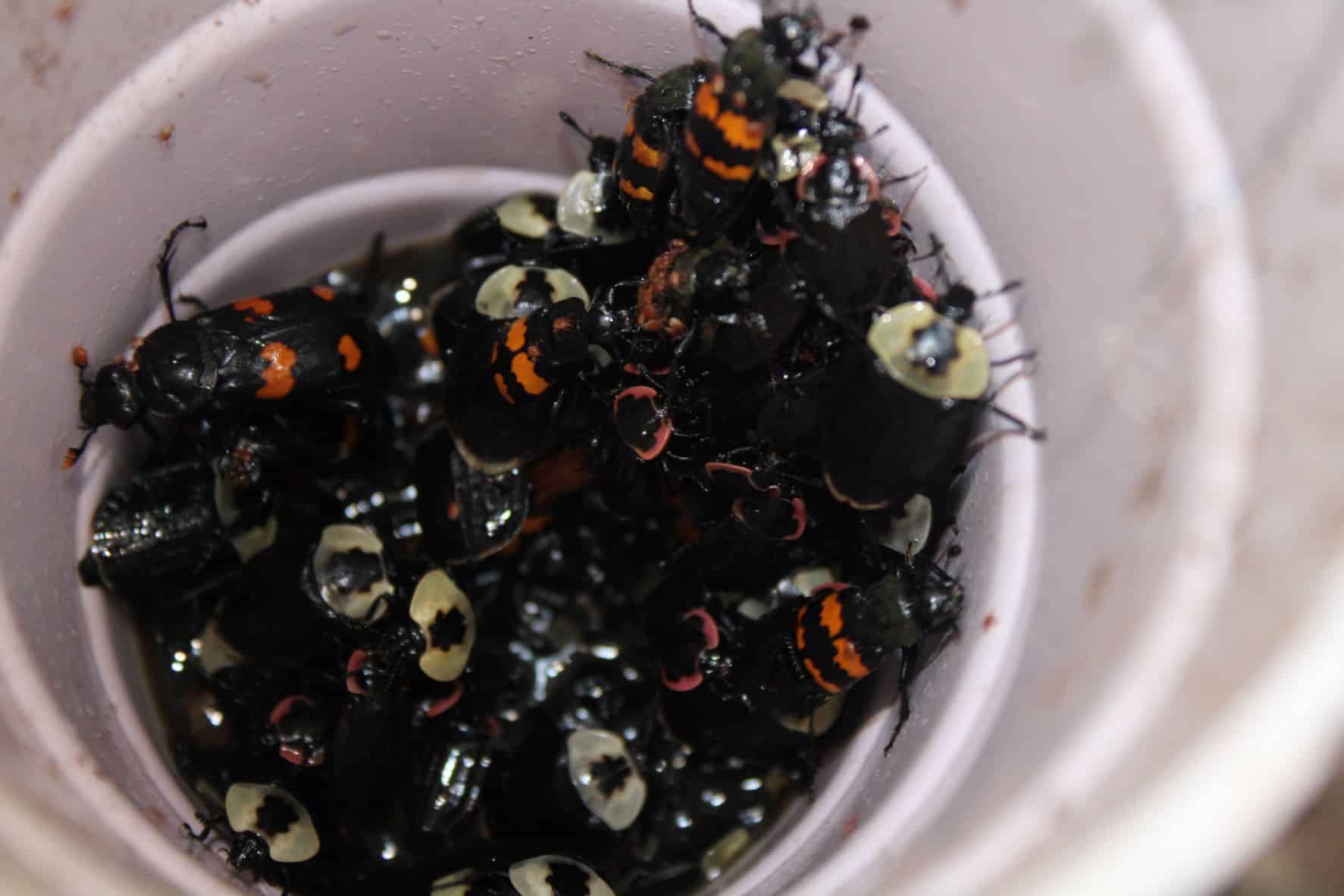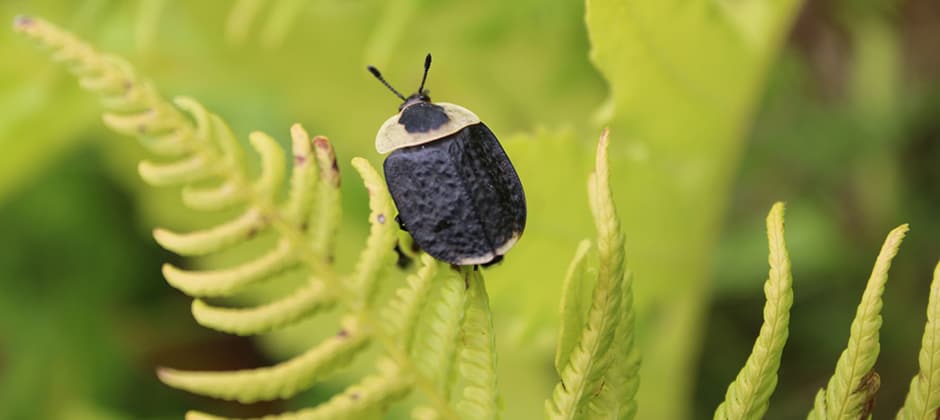Share this article
TWS2021: Carrion beetles carry on clues to the wildlife they eat
To survey cryptic species, it’s sometimes easier to detect their DNA than it is to find the animals themselves. Sometimes, researchers find DNA lingering in the water, on the ground or in the air, known as environmental DNA—or eDNA. And sometimes they find it in the ticks, flies, mosquitos and other insects that bite them, as invertebrate DNA—or iDNA.
Usually, the insects don’t survive the research. They’re typically euthanized. But when TWS member Katherine Schneider, a PhD student at Michigan Technological University, looked for iDNA among beetles, she trapped them and released them.
“It’s more respectful in my opinion,” said Schneider, whose presentation at the TWS 2021 Annual Conference received the award for Best Student Poster Presentation.
Releasing them also provided an opportunity to learn more about the insects. Schneider dusted the beetles with paint that glows in ultraviolet light in a tiny mark-recapture study.
Researchers already knew they could gather iDNA from biting insects, but Silphid beetles were another story. Instead of biting living animals, these carrion beetles (Silphinae) and burying beetles (Nicrophorinae) feed on carcasses. It made sense that biologists could gather iDNA from them, too, unless decomposition affected the quality of the DNA. Nobody had ever tried to find out, though. That’s where Schneider and her team came in.
If it worked, they could use the technique as a noninvasive way to determine what hard-to-find mammals might be out on the landscape. But Schneider had another possible application in mind. Since American burying beetles are listed as threatened under the Endangered Species Act, understanding what they eat could offer some clues for their conservation as well.
“I don’t know that there’s a lot of people who care about them,” she said, but as composters, they can play an important role in the ecosystem, even keeping down fly numbers.

A pitfall trap captures multiple species of burying and carrion beetles. Credit: Katherine Schneider
Schneider is among those who do care about them. “I really love beetles in particular,” she said. “Insects are a crazy diverse group of animals, and beetles and moths are the most diverse. They can be found in almost any ecosystem, any environment. There’s a saying that God must have had an inordinate fondness for beetles because he made so many of them.”
In 2019, Schneider and her team headed out into the Ford Forest near Alberta, Michigan, in the university’s North Hardwood-Silviculture Experiment for Enhancing Diversity. They set out beef, catfish bait and tiny mouse carcasses to lure the beetles into pitfall traps, with a mesh barrier to keep the bait from contaminating whatever iDNA they might find.
They hoped they might be able to draw some conclusions about the beetles’ habitat selection, but their sample size was too small. Of the 40 individuals they collected, about half were larvae, which aren’t too picky about where they feed. “They just go wherever they can crawl to,” Schneider said.
Her team was able to prove that the method worked, though. They teased out DNA from mice, moles, chickens, canids and cows.
After those initial results, Schneider expanded the research last summer and plans to do so again in the summer of 2022 to get a better sense of how viable the technique is.
Header Image:
An American carrion beetle comes close to one of researcher Katherine Schneider’s traps.
Credit: Katherine Schneider








